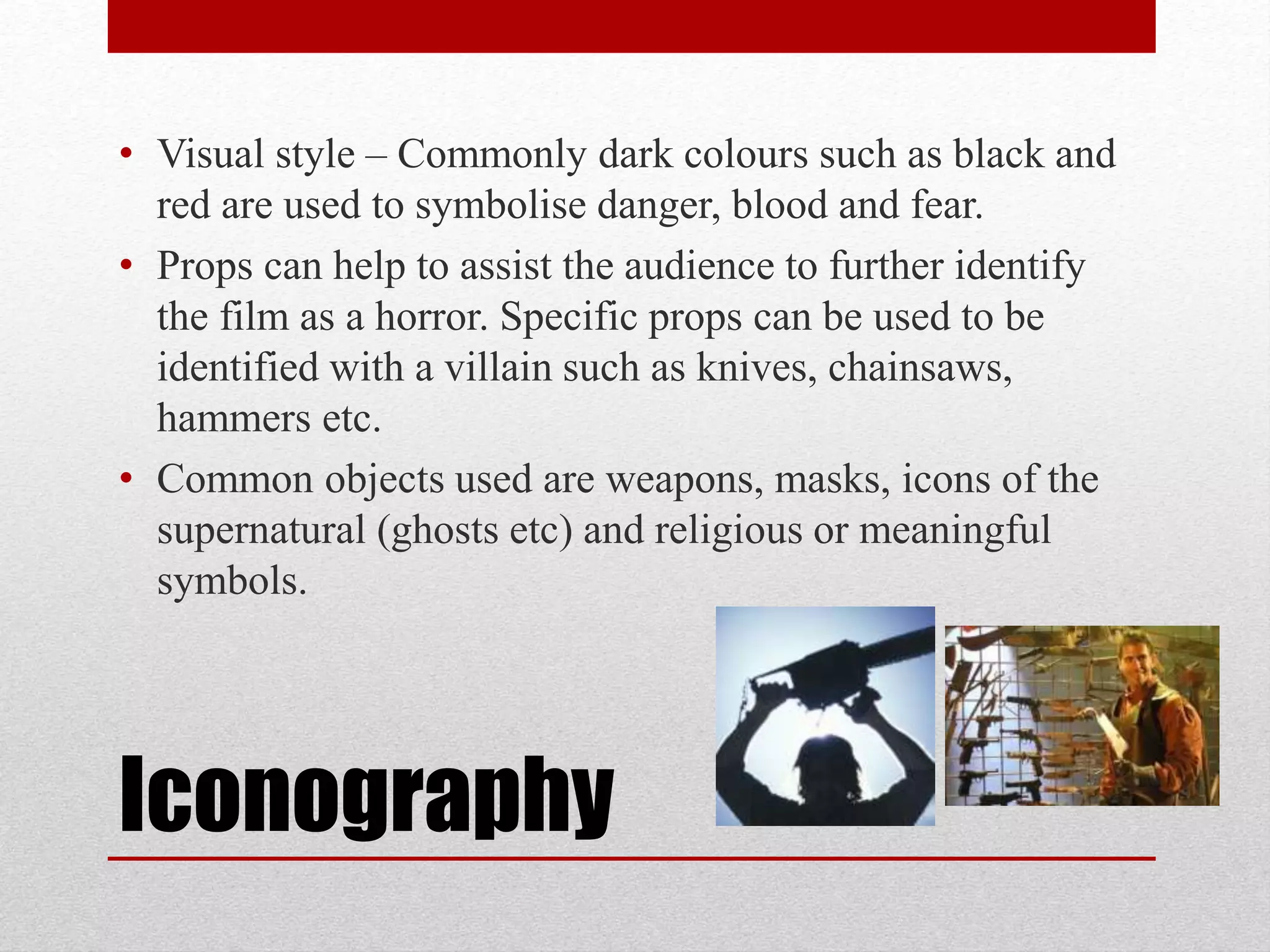Horror films commonly use certain settings, visual styles, camera techniques, and character tropes. Stereotypical settings include isolated places like small towns, dark alleys, and abandoned buildings. Visual styles often employ dark colors and specific props associated with villains. Common camera techniques are high and low angles to convey power dynamics, and point-of-view shots to increase the audience's fear. Character tropes include vulnerable female victims, overconfident male non-believers, masculine heroes, masked evil figures, and distracted couples targeted by killers.




